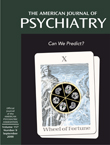Cyproheptadine for Posttraumatic Nightmares
Ms. A was a 29-year-old West African asylum seeker who fled to the Netherlands after having been raped and nearly killed by rebels. She fully met the DSM-IV criteria for posttraumatic stress disorder. She had severe nightmares about the rape up to 5 nights a week.A drug-free standard night polysomnography was performed. Sleep latency was 15 minutes. The first REM period (lasting 9 minutes) occurred 85 minutes after the onset of sleep. After 77 minutes of stage 2 sleep with a cyclic alternating sleep pattern, a second REM period was recorded (58 minutes). A third REM period (24 minutes) appeared after 18 minutes of slow-wave sleep. Consecutively, a 56-minute cyclic alternating sleep pattern was recorded, interrupted by many short arousals and followed by a fourth REM period. After 12 minutes Ms. A woke up in panic from her “usual nightmare.” At that time no signs of sleep paralysis or EEG abnormalities were present on polysomnography.Despite considerable improvement after psychotherapy, Ms. A’s nightmares continued. Cyproheptadine therapy was prescribed at up to 12 mg at 10:00 p.m. Her nightmares soon became less frightful, and they decreased to less than one a week. Her serum level of cyproheptadine 12 hours after intake of 12 mg was 6 μg/liter. A second polysomnography was conducted. Sleep latency was 10 minutes. Non-REM stage 2 and slow-wave sleep were interrupted by three arousals. The first REM period (13 minutes) occurred after 144 minutes of sleep, followed by slow-wave sleep with two periods showing a cyclic alternating sleep pattern. After 70 minutes REM sleep reappeared for 6 minutes. A final REM period lasted for 10 minutes after a light 5-minute sleep. No nightmares were reported.The main differences between the two sleep recordings were the paucity of deep sleep during the first night and the percentages of REM sleep—30.4% and 12.6%, respectively (normal values=20%–25%) (5). Moreover, during the first polysomnography, REM sleep appeared earlier and more predominantly in the middle third of the night. The second polysomnography showed a nearly normal sleep architecture.
References
Information & Authors
Information
Published In
History
Authors
Metrics & Citations
Metrics
Citations
Export Citations
If you have the appropriate software installed, you can download article citation data to the citation manager of your choice. Simply select your manager software from the list below and click Download.
For more information or tips please see 'Downloading to a citation manager' in the Help menu.
View Options
View options
PDF/EPUB
View PDF/EPUBGet Access
Login options
Already a subscriber? Access your subscription through your login credentials or your institution for full access to this article.
Personal login Institutional Login Open Athens loginNot a subscriber?
PsychiatryOnline subscription options offer access to the DSM-5-TR® library, books, journals, CME, and patient resources. This all-in-one virtual library provides psychiatrists and mental health professionals with key resources for diagnosis, treatment, research, and professional development.
Need more help? PsychiatryOnline Customer Service may be reached by emailing [email protected] or by calling 800-368-5777 (in the U.S.) or 703-907-7322 (outside the U.S.).

